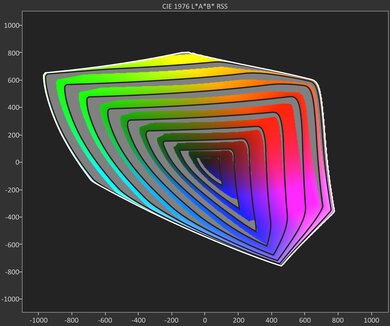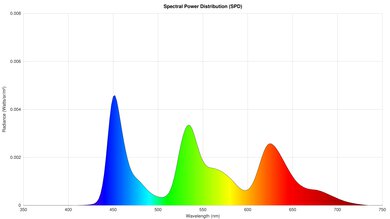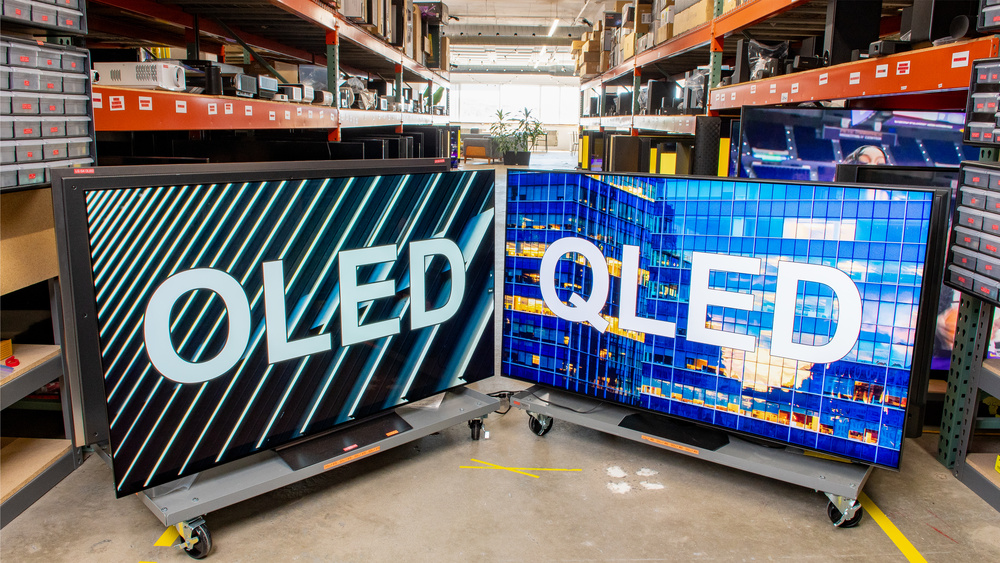
QLED and OLED are two of the most popular TV technologies in 2025, so if you're shopping for a TV right now, chances are you're trying to choose between them. But what do these terms mean, and how can you use this information to make the right buying decision? Fret not, we're here to help demystify these terms so you can find the right TV for your needs. Unlike some other tech comparisons, it's not so black and white, and spoiler alert, there's no one-size-fits-all winner in this comparison.
In this article, we'll explain what these terms actually mean, discuss their impact on your TV-watching or gaming experience, and offer a few tips to help you decide which one is right for you.
What Are They?
Before we get into the details of how they perform and how you should choose OLED vs QLED, let's start with the basics. What do each of these terms mean? This part is a bit technical, so if you just want to see who wins when it's QLED versus OLED, skip to the performance section below.
OLED
OLED stands for Organic Light Emitting Diode, and it refers to how this type of TV produces light. Almost all non-OLED TVs produced over the last 10-15 years use LEDs located behind the screen to generate light. That light then passes through various filter and diffusion layers to produce the final image you see. OLEDs have one main advantage over LEDs: they're extremely small, the size of a single pixel. Instead of LEDs, which are relatively large and light up a relatively large area of the screen, OLEDs can be controlled individually, so you can have a single pixel at max brightness surrounded by darkness, and it'll be displayed perfectly, with no distracting halo effect that bleeds into the dark areas of the scene.
There are multiple types of OLED out there, but in the world of TVs, there are two choices: WOLED and QD-OLED. These two terms refer to how the TV produces colors. WOLED TVs use white light as a starting point, which then passes through red, green, and blue color filters to produce the primary colors needed for each pixel. QD-OLEDs use blue light as a starting point, and then they use something called quantum dots to convert blue into red and green. For this article, we're only going to be looking at WOLED panels. Stay tuned for a separate article comparing QD-OLED and QLED panels, or learn more about the differences between QD-OLED and WOLED.
QLED
QLED, or Quantum Dot Light Emitting Diode, is mainly a marketing term to describe various panel technologies that use an LED backlight, but with the addition of quantum dots. Quantum dots are a better way to produce color in TVs that use LEDs as a backlight. Before QLED came along, most LED TVs used white LEDs to produce light. This light then passes through three color filters to produce the separate red, green, and blue subpixels. These filters aren't very efficient, as they work by simply blocking the unwanted portions of light coming from the white backlight.
Quantum dots, on the other hand, are extremely efficient at converting light. Instead of stripping away every unwanted color from a white light source, quantum dots work by taking the energy from light that hits them and emitting new light at a different wavelength. This process is far more efficient at producing light, as it's taking most of the energy from the light coming in and directly converting it to the desired wavelength. That's not all, though. The wavelength of the light emitted by a quantum dot depends only on the size of the dot. Since manufacturers can precisely and consistently control the exact size of the dot, they can produce a much purer color spectrum. This allows for a wider color gamut, with brighter, more vibrant colors.
Performance
So now that we've explained what these terms mean, let's take a closer look at how they compare, so you can make a clear buying decision. To compare these two cutting-edge TV technologies, we'll look at two 2025 flagship models: the Samsung QN90F QLED and the LG G5 OLED. We'll focus on the panels themselves and how they differ, so we won't cover things like inputs, smart features, or audio, as these things aren't affected by the panel. So, is OLED better than QLED?
Contrast
Thanks to their ability to control the light output of each individual pixel, WOLEDs like the LG G5 deliver the absolute best contrast possible. WOLEDs definitely have an edge over QLEDs when it comes to dark-room viewing. Since QLEDs rely on LED backlights to produce light, they're not quite as good, but they're getting a lot better. When combined with modern Mini LED local dimming, QLEDs have significantly narrowed the gap in 2025. The Samsung QN90F isn't the best example of this, and some models from competing brands like the Hisense U8QG or the TCL QM7K deliver nearly perfect contrast. Even these stellar examples have some unavoidable downsides that make them worse overall than WOLEDs, like a halo effect around bright highlights or subtitles, and some distracting flicker when bright lights move across dimming zones.
Winner: WOLED.
Brightness
QLEDs are, on average, slightly brighter than most WOLEDs that are on the market in 2025, but WOLEDs have gotten a lot brighter in recent years thanks to new technology like MLA and RGB tandem panels. This is especially true when looking at very bright scenes, as WOLEDs all drop off in brightness with brighter scenes, so if you're a sports fan, for example, then most QLEDs are significantly brighter. When looking at average scenes with bright highlights, like the hallway photo above, the difference isn't as significant, and most recent WOLEDs are just as bright as most QLEDs.
Overall, if you care about brightness, it's very important to look at the measurements. With so many different variants on WOLED technology, and so many different levels of backlighting on QLEDs, it's no longer true that all QLEDs are brighter than all WOLEDs, or vice versa. So, for brightness, you can't pick one simply based on the panel technology; you really have to look at the measurements for the specific model and see if it meets your needs.
Winner: It depends on the specific model; no panel type is inherently brighter.
Colors
There's no clear winner when it comes to colors, and in the end, it'll depend more on the specific type of WOLED or QLED you're looking at. Most WOLEDs on the market in 2025 produce a color spectrum that looks like the LG C5's above. As you can see, there's almost no separation between the primary colors, and there's a lot of noise, including the large amount of yellow that exists between red and green. Ideally, this noise wouldn't be there, as it reduces the purity of colors and, in turn, reduces the range of colors that a TV can produce.
The exception to this rule is the LG G5. As you can see in the color gamut rings above, it actually exceeds the coverage of the Samsung QN90F. It can do this thanks to the new RGB tandem panel it uses. This technology, which was first introduced on the G5 in 2025, allows it to produce much purer colors and a wider range of colors than WOLEDs used to be capable of.
Like WOLEDs, not all QLEDs are created the same, and there are different types and different qualities of quantum dots. Some QLED panels use a simpler design to save costs, and this impacts the range of colors you'll see. One common variant of true QLEDs can be seen in the Hisense U7N example above. This TV uses quantum dots to produce green, and you can see that the greens are nearly as pure as they are on the QN90F. Reds are a different story, though, as this TV uses a KSF phosphor to produce reds instead of quantum dots.

If we look at the BT.2020 coverage measurements from our SDR Color Volume test, we can see a clear pattern. WOLED and QLED panels perform roughly the same, but QLEDs are, on average, slightly better. QLEDs that use KSF phosphors, on the other hand, are slightly worse than both QLED and WOLED panels. Finally, you can see the average range for LED models without quantum dots, and it's much, much lower than any other display type.
Winner: QLED.
Uniformity
Whether you're watching sports or using your TV as a computer monitor, the last thing you want is an uneven, dirty-looking screen. Screen uniformity usually varies significantly between each individual panel, but WOLEDs are almost universally better than QLEDs.
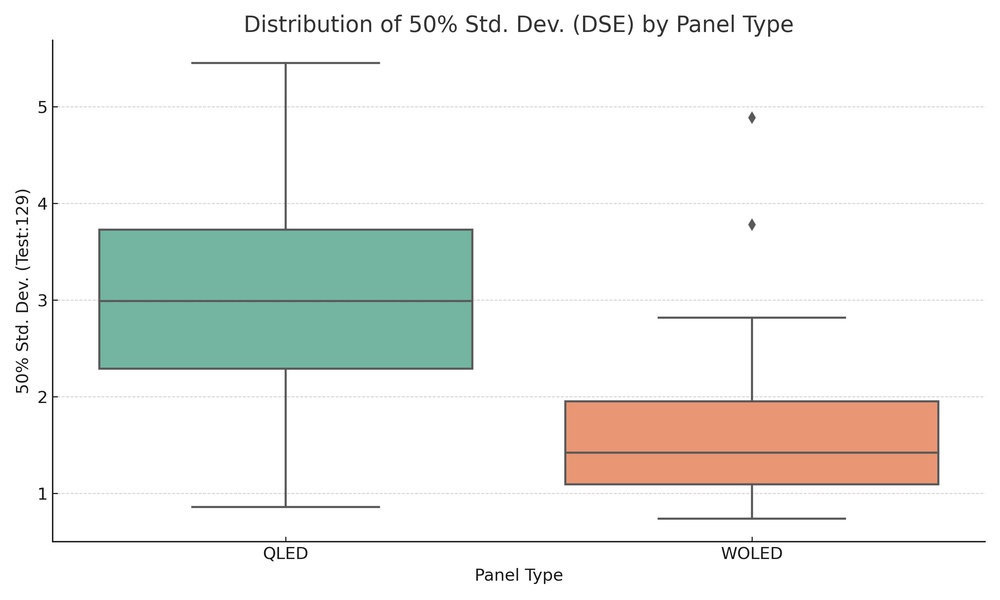
If we look at the standard deviation of a 50% gray slide across 41 TVs we recently tested, you can see there's really no contest here. Lower numbers are better, and the vast majority of WOLEDs have better uniformity than average QLEDs. Now, that's not to say that WOLEDs are perfect, and there are other uniformity issues that affect WOLED panels that aren't really shown in this data, like the dreaded green tint issue, but if uniformity is important to you, then WOLEDs are the better choice.
Winner: WOLED
Response Time
 |  |
 |  |
When it comes to response time, WOLEDs are significantly better than even the fastest QLEDs. Most WOLEDs can transition from one shade to the next nearly instantaneously. For a fair comparison, we're only looking at the 60Hz results, but at 120Hz, the difference is even more striking. If you're a gamer, WOLED is definitely the way to go. However, this has a downside as this quick response time results in more noticeable stutter when watching movies.
Winner: WOLED.
Longevity
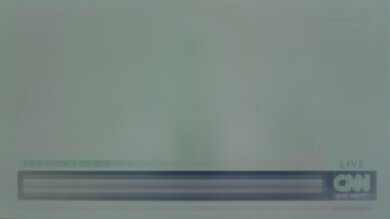 |  |
It wouldn't be an article on WOLEDs if we didn't discuss the dreaded 'b'-word: burn-in. Our extensive testing with the accelerated longevity test and the real-life burn-in test has shown that when exposed to the same static elements for extended periods, all OLEDs will eventually experience burn-in, but it could take years for many users. That said, you probably won't have any issues if you watch varied content and aren't always glued to the same cable news network. Interestingly, the longevity test has clearly shown that QLEDs aren't immune to these issues, and although it's not burn-in, the quantum dots themselves have a limited life span, and these layers degrade over time. You can see an example of this in the Samsung QN95B above. The quantum dots are starting to fail, resulting in worse uniformity.
With all of that in mind, there's really no clear winner when it comes to longevity. If you're a gamer or watch the same channels all the time, a QLED is probably a safer choice, but as long as you mix it up occasionally, your WOLED should last you just as long.
Winner: Tie
Cost & Selection
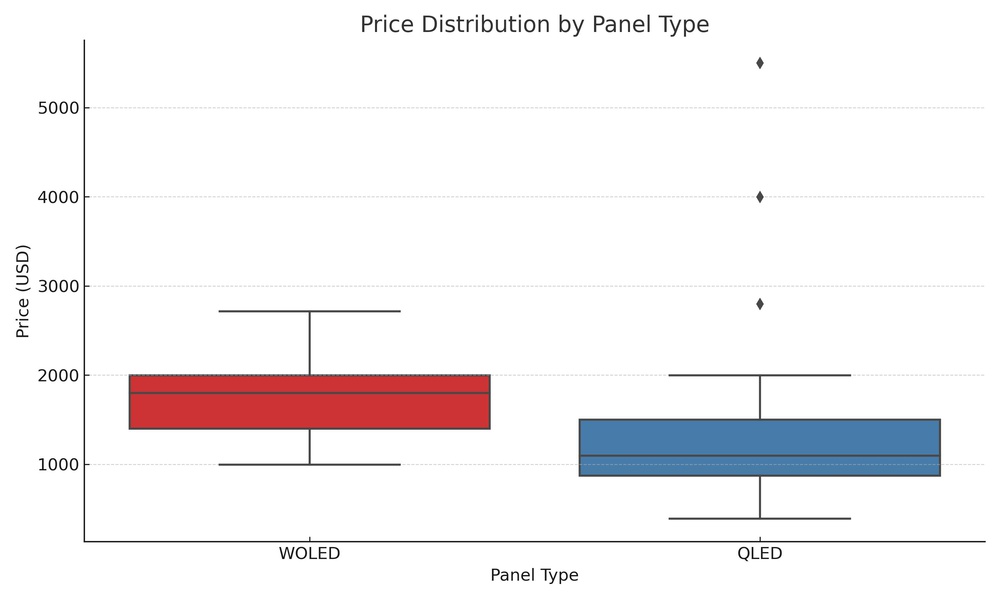
Both WOLED and QLED models are well-established technologies available in a wide range of sizes and prices, so there's something to fit almost any budget or room. That said, WOLEDs tend to have higher median prices and start at a higher price point, so QLED is the way to go if you're looking for something cheap. QLEDs have a lower median price, but a wider price spread, from cheap, entry-level models up to the latest 8k panels, so there's more variety to choose from depending on your budget and the features you're looking for.
Conclusion
WOLED and QLED TVs both have the potential to deliver stellar picture quality, and after reading this article, it should be clear that there's no clear winner; they each have their strengths and weaknesses. Thanks to their nearly perfect contrast, WOLEDs are usually the way to go if you're in a dark room, but they're not necessarily the best choice for everyone.
Although these comparisons look at the best of the best in 2025, most of them are still valid for any WOLED or QLED. That said, when shopping for a TV (or anything for that matter), it's important to always look beyond the panel tech and see how the product actually performs. This comparison is designed to help steer you in the right direction based on what you care about, but it's just a starting point.





